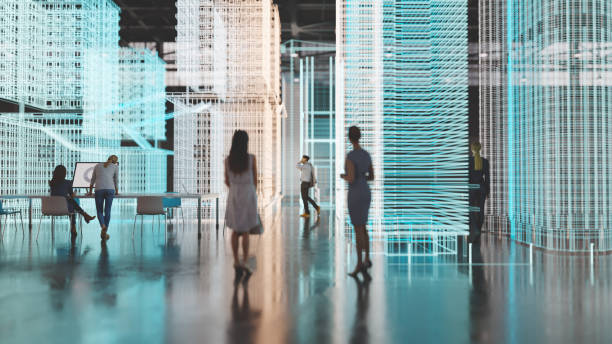Holographic Sculpture: The Next Frontier in Art
In a world where technology and art increasingly intertwine, holographic sculpture emerges as a groundbreaking medium that challenges our perceptions of space, form, and reality. This cutting-edge art form merges the tangible with the intangible, creating ethereal three-dimensional images that float in mid-air, captivating viewers and pushing the boundaries of artistic expression. As galleries and museums around the globe begin to embrace this innovative technique, holographic sculpture is poised to redefine the landscape of contemporary art.

From 2D to 3D: The Evolution of Holographic Sculpture
While early holographic art primarily focused on two-dimensional images, the concept of holographic sculpture began to take shape in the 1980s and 1990s. Artists like Dieter Jung and Paula Dawson experimented with creating three-dimensional holographic objects that appeared to occupy real space. These early works were limited by the technology of the time, often requiring specific lighting conditions and viewing angles to be effective.
Technological Advancements Drive Artistic Innovation
Recent years have seen a surge in holographic sculpture, thanks to significant technological advancements. High-powered lasers, advanced computer algorithms, and new holographic materials have expanded the possibilities for artists working in this medium. Modern holographic sculptures can be viewed from multiple angles, interact with their environment, and even incorporate movement and sound. Artists like Matthew Schreiber and Yoichiro Kawaguchi are at the forefront of this movement, creating immersive installations that blur the line between reality and illusion.
The Artistic Potential of Holographic Sculpture
Holographic sculpture offers unique opportunities for artistic expression. Unlike traditional sculpture, which is constrained by physical materials, holographic works can defy gravity, change color and form, and even pass through solid objects. This flexibility allows artists to create pieces that challenge viewers’ perceptions and explore complex concepts in ways that were previously impossible. For example, artist Joanie Lemercier uses holographic techniques to create abstract geometric forms that seem to float in space, inviting viewers to question their understanding of dimensionality and perception.
Challenges and Controversies in Holographic Art
Despite its potential, holographic sculpture faces several challenges. The technology required to create and display these works can be expensive and complex, limiting access for many artists. Additionally, there are ongoing debates within the art world about the nature of holographic sculpture and its place in the broader context of contemporary art. Some critics argue that the technological aspect overshadows the artistic merit, while others see it as a natural evolution of sculptural practice in the digital age.
The Future of Holographic Sculpture
As technology continues to advance, the possibilities for holographic sculpture are expanding rapidly. Emerging techniques like volumetric displays and augmented reality promise to further blur the lines between physical and digital art. Museums and galleries are increasingly incorporating holographic works into their collections and exhibitions, signaling growing acceptance within the art world. As more artists explore this medium, we can expect to see holographic sculpture play an increasingly significant role in shaping the future of contemporary art.
Impact on the Art Market and Collecting
The rise of holographic sculpture is also having a profound impact on the art market. Collectors and institutions are grappling with new questions about how to acquire, display, and preserve these technologically complex works. Some galleries are developing specialized viewing rooms equipped with the necessary technology to showcase holographic pieces, while others are exploring ways to make these works accessible to a wider audience through virtual exhibitions and digital platforms.
Holographic Sculpture in Public Spaces
Beyond galleries and museums, holographic sculpture is finding its way into public spaces, transforming urban environments and challenging traditional notions of public art. Cities around the world are commissioning large-scale holographic installations that interact with their surroundings, creating dynamic and ever-changing visual experiences for passersby. These public works not only showcase the artistic potential of holography but also raise important questions about the role of technology in shaping our shared spaces.
Educational Implications and Artistic Training
The emergence of holographic sculpture is also influencing art education and training. Art schools and universities are beginning to incorporate holographic techniques into their curricula, preparing the next generation of artists to work with this cutting-edge medium. This shift is not only teaching new technical skills but also encouraging students to think differently about space, light, and the nature of materiality in art.
As holographic sculpture continues to evolve and mature as an art form, it promises to open up new realms of creative expression and viewer experience. By challenging our perceptions of reality and pushing the boundaries of what is possible in three-dimensional art, holographic sculpture stands at the forefront of a new artistic revolution, inviting us to see the world in ways we never thought possible.





